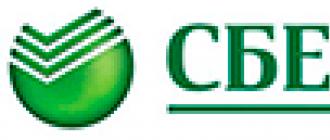Question:
I was given a debit bank card, but the bank employee did not explain anything about what information is reflected on the bank card, what the appearance of the card conveys. May I need information on a bank card, and in what cases?
Answer: First, let’s talk about what a bank card looks like, or rather, what the card’s appearance might be. The bank card has a format defined by the ISO 7810 ID-1 standard: 85.6 mm x 53.98 mm x 0.76 mm, and is mainly made of plastic. The front and back sides of the card carry various functional information. The general background of the front side of a bank card is approved by the bank based on the designs developed by the designers, and the back side always has a plain background. That is, the design and color of the card depends on the preferences of the issuing bank, and also takes into account the requirements of the payment system that services this card.
The background should contribute to the aesthetic perception of the card and the recognition of the bank that issued the card. For certain types of cards, banks offer cardholders to decide on the design themselves, that is, they give the client the right to choose an individual design.
Using stolen personal cards, it is more difficult to purchase goods at retail outlets, especially expensive ones, since if the purchase amount is significant or if there is the slightest doubt, sellers have the right to ask to see a passport.
Therefore, a month before the expiration date of the card, it is necessary to contact the bank to re-issue a new card or write an application to close the card account.
When choosing to make a payment, you must take into account that the name and logo of the payment system on the bank card must correspond to their counterpart on the self-service device or ATM. If there is no such logo on the device, then this self-service device/ATM will not service your card.
For the American Express payment system, the card number consists of 15 digits, divided into 3 blocks of 4,6 and 5 digits each (4-6-5).
And for the Russian national payment system "Mir" the card number consists of 16 digits divided into 4 blocks of 4 digits (4-4-4-4).
The card number is the access number to the cardholder's bank account.
The card number is used by the holder in the Mobile Bank or Online system.
Using the first digit of the card number, you can obtain information about which payment system the card belongs to and whether it matches the logo. So, the first numbers of payment systems that operate in Russia are as follows:
- World - 2;
- VISA – 4;
- American Express – 3
- MasterCard – 5
- Maestro - 3, 5 or 6
- China UnionPay - 6
- JCB International - 3
- UEK - 7.
Back of the card
A sketch of the appearance of the reverse side of a bank card with the numbering of elements looks like this:
The reverse side of the bank card displays information on the following elements:
- Bank's name– at the bottom of the card the name of the bank to which the card belongs must be repeated.
- White paper strip located next to the magnetic stripe. It is only available on personalized cards - and is intended for applying a sample signature of the card holder. This is also protection - if you try to forge a sample signature at the time of making payments using a stolen card, problems may arise.
The paper strip, in addition to the sample signature of the card holder, is filled with information taking into account the elements of the type of payment system and the card authentication code.
So, for example, a bar can be filled:
- diagonal lines with the word VISA in blue/blue and gold colors and a 19-digit number printed in a special font slanted to the left, which includes 16 digits of the card number and 3 digits of the security code
- diagonal lines with the word MasterCard or MC in red, blue/cyan and yellow and a 7-digit number in the center of the panel, printed in a special font slanted to the left, which includes the last four digits of the card number and 3 digits of the security code
- Card authentication code(CVV2 and CVC2) - for payment systems, MasterCard or Visa, it consists of three digits, and is located on a white strip of paper, next to the place for the holder’s signature after the last four digits of the bank card number indicated there. The code is used as an additional means of identifying the cardholder during payments, especially on the Internet. It is not found on all categories of cards of these systems.
Card authentication code using technology MirAccept payment system "MIR" - consists of three digits and is located on the back of the card. Sberbank of Russia, for example, has a code located before the words “Thank you from Sberbank.”
- Magnetic stripe on the card- This is a magnetic strip soldered into plastic, which is a carrier of information. Data is written to the card once and will not be rewritten in the future. The recording (or encoding) is made on the instructions of the bank and includes data: about the cardholder, his account number, bank and other additional data necessary for the bank.
The magnetic stripe can be black, dark brown or any other color.
When the first payment cards appeared in our country, they were a “trick” of the elite. It was impossible to pay with them almost anywhere, and there weren’t very many ATMs for withdrawing cash. Then the card was more of an element of prestige, an indicator of status. But time passed and the cards became widespread, especially when organizations began to transfer salaries to them. The amount of plastic has increased many times over, and now it is more difficult to find a store that does not accept it for payment than a store that does.
Against the backdrop of such a rapid growth in the popularity of this means of payment, various card fraud schemes began to appear like mushrooms after rain. Indeed, today it is not difficult to pay for anything using card details; it is enough to know them. And here bank employees dealing with cards are very often faced with irresponsibility, carelessness and a complete lack of understanding by holders of the fact that telling anyone all the details of their card is not the smartest idea.
Which card details can be shared with others and which cannot? What are the consequences of a careless attitude towards a small piece of plastic with a chip and a magnetic stripe?
In this article, we will call the card details the following information:
- card number;
- current (card) account number;
- Card PIN;
- CVC code;
- Full name of the holder.
Of course, calling all this details is not entirely correct, but within the framework of the article this term is quite suitable.
Is it possible to transfer the card number
The card number is the 16 digits (or 18 if you have a Cirrus Maestro card) printed on the front of the card. The following information is encrypted inside this 16-digit number: the name of the payment system, who the issuing bank is and the type of card.
What can you do with only these props? Overall, nothing bad. Knowing the card number does not allow you to make a payment or steal your money in any other way.
Bottom line: transferring only the card number is a safe procedure and does not threaten any trouble.
Current (card) account number.
The account number is a 20-digit number, usually starting with the numbers 40817. Only its owner (or the person for whom a notarized power of attorney is issued) is allowed to carry out transactions directly with the card account and not in all banks. All that someone who only has this information can do is put money into your account. And only if the account is in rubles.
The result: the account number does not provide any useful information to the attacker. Even complete with card number.
Card PIN code.
The card's PIN code is a four-digit number issued when receiving plastic in a sealed envelope. However,  Lately, more and more banks have been inviting the holder to independently come up with a combination of numbers to access the account. Yes, these are the numbers that provide (if you have a card) the opportunity to withdraw cash or pay for goods. It’s not for nothing that every bank, when receiving plastic, pays attention to the fact that sharing your PIN code with third parties is STRICTLY PROHIBITED. Even if this third party is a close relative. Of course, the PIN itself is useless without the physical presence of the card. But who can guarantee that you won’t lose it? In my practice, there have been cases when money was withdrawn by the holder’s best friends, colleagues, and classmates. Once there was a case when this was done by the only daughter of the holder, who was never denied anything. When the man watched the video in which a dispassionate video camera recorded this fact, he immediately aged ten years. It was scary. What the person experienced at the same time, I’m even afraid to think.
Lately, more and more banks have been inviting the holder to independently come up with a combination of numbers to access the account. Yes, these are the numbers that provide (if you have a card) the opportunity to withdraw cash or pay for goods. It’s not for nothing that every bank, when receiving plastic, pays attention to the fact that sharing your PIN code with third parties is STRICTLY PROHIBITED. Even if this third party is a close relative. Of course, the PIN itself is useless without the physical presence of the card. But who can guarantee that you won’t lose it? In my practice, there have been cases when money was withdrawn by the holder’s best friends, colleagues, and classmates. Once there was a case when this was done by the only daughter of the holder, who was never denied anything. When the man watched the video in which a dispassionate video camera recorded this fact, he immediately aged ten years. It was scary. What the person experienced at the same time, I’m even afraid to think.
Bottom line: The PIN is the key to the safe that contains your money. When communicating it to someone else, you need to be prepared to give everything you have to that person. At the same time, challenging an operation confirmed by a PIN code is extremely difficult, almost impossible.
CVC code.
If you turn the card over and look at the signature strip, you will notice a three-digit number. This is your CVC code  plastic. It is used to confirm that your card is with you when you pay for goods or services on the Internet. That is, carry out so-called Card Not Present (CNP) operations. Previously, only this three-digit number was needed to carry out such operations. Now, with the introduction of 3D Secure technology, the procedure has become more complicated, but nevertheless, on some sites this data is still enough to pay. It is clear that it is extremely undesirable to share this code with anyone unless you want to one day be surprised to find out that you have made a huge number of purchases on the Internet without knowing it.
plastic. It is used to confirm that your card is with you when you pay for goods or services on the Internet. That is, carry out so-called Card Not Present (CNP) operations. Previously, only this three-digit number was needed to carry out such operations. Now, with the introduction of 3D Secure technology, the procedure has become more complicated, but nevertheless, on some sites this data is still enough to pay. It is clear that it is extremely undesirable to share this code with anyone unless you want to one day be surprised to find out that you have made a huge number of purchases on the Internet without knowing it.
Full name of the holder
The holder's full name alone will prevent anyone from using your money. The situation is more complicated if the card number is also attached to it. Finding the name that is stamped on your card, knowing the holder’s full name and the simplest rules of transliteration, will not be difficult. The validity period of the card can also be selected. Knowing these parts of the details, it is quite possible to register your card in the accounts of some online stores. And in the future, carry out transactions allegedly on your own behalf. However, now a 3D Secure system has appeared to guard your money. It makes life much more difficult for attackers. The main thing is that it is connected to your card.
Bottom line: in general, nothing fatal will most likely happen when the full name and number of the cardholder are revealed. However, it is still not worth sharing this data with complete strangers.
Last 4 digits of the card number.
The last 4 digits of the card number are... just four digits. They do not carry any useful information, and, having acquired only this “secret” information, no one will be able to use your money.
Bottom line: having only this information, it is impossible to use the money.
To summarize:
Under no circumstances should you tell anyone (including bank employees) the PIN code from your card, CVC code, or security codes sent to your phone. And under no circumstances post a photo of your card on the Internet.;
It is highly undesirable to provide the card number complete with the holder’s full name and expiration date;
Is it possible to find out the owner by the card number? We will have to find the answer to this question further. In general, sometimes such information can be useful. For example, if a person found someone else’s plastic. Returning it under such circumstances will not be difficult. But even without the name and surname of the card holder, you can return it to the owner. We'll talk about this later. In fact, everything is not as difficult as it seems.
Chances of success
Is it possible to find out the card owner by card number? Or should we abandon this idea?
It is impossible to answer such a question unambiguously. The point is that the chances of success directly depend on the specific situation. In some cases, obtaining information about the owner of the plastic is a simple task. And it happens that you can return the card without the citizen’s data.
Failed translations
Let's look at a few different situations that require this information. Is it possible to find out the owner of a plastic card to whom funds were transferred unsuccessfully (by mistake) by the card number?
Yes, but not fully. For example, Sberbank can display only the first and patronymic of a citizen, as well as the first letter of the last name. That is, it will not be possible to understand 100% to whom the funds were transferred.
To get at least this information, you will have to:
- Log in to Sberbank Online. If you are using a card from another bank, you must select the appropriate banking option.
- Start the operation to repeat the transfer of funds.
- Look at the "Recipient" column.
There is no need to complete the transaction. In this way, a person will be able to indirectly find out the middle name and name of the recipient of funds by the card number.

Banks and personal information
Is it possible to find out the owner of the plastic card by contacting the bank directly by the card number? After all, it is financial institutions that store information about clients.
According to current legislation, last names, first names, patronymics and other information about citizens cooperating with banks are not disclosed. This is confidential information. And if you ask an employee of a financial institution to name the data of the plastic holder, the requester will be refused on legal grounds.
The exception is law enforcement agencies. They are provided with information about citizens by card numbers only during certain investigations. Such information is simply not disclosed.
Card types and data
How to find out the owner by Sberbank card number? We have already met one rather interesting technique. But it is not exhaustive.
It is worth paying attention to the fact that the answer to the question being studied directly depends on the type of card the client is working with. There is personalized plastic and instant plastic. In the first case, it is easier to understand who owns the card than in the second. After all, instant plastic reflects only technical information.
What can you find out from the map?
How to find out the full name of the owner of a plastic card? In fact, it is impossible to completely understand such a problem. This is impossible and illegal. There are some tricks, but more on them later.

First, let's look at the information that can still be found out by the bank plastic number. It is not secret. However, some information is encrypted in the card number itself.
So, by looking at the plastic you can tell:
- payment system - the first digit (4 - "Visa", 5 - "MasterCard" and so on);
- BIN of a financial organization - numbers up to 6 inclusive;
- the bank program according to which the plastic was issued - 7 and 8 digits;
- owner identifier - 9-15 digits (full name does not contain);
- check digit for card verification - the last digit of the number.
That's all. As you can see, the plastic number can demonstrate detailed information about the issuing bank. But it is difficult to find out the data of the owner of the plastic.
For personalized cards
If a citizen finds a name card, you can partially cope with the task. What is it about?
Is it possible to find out the owner through the card number? Name cards allow you to see only the first and last name of the citizen. That is, complete information about the plastic is still not disclosed. And the card number has nothing to do with it.
The last name and first name of the plastic card holder are written in Latin on the front of the plastic card. Just look at the map and read what is written on it. This is the only way to somehow get a lead on who lost the plastic.

Instant cards, as we have already said, contain only technical information instead of first and last names. And therefore the described technique will not help. Such products simply do not have the owner’s first, last, or patronymic name.
Secret tricks
How to find out the owner's full name by card number? We have already said that there are no legal ways to cope with the task. Therefore, you will have to look for a way out of the situation and agree with very risky techniques.
You can find many sites on the Internet that offer searches for information about citizens using their bank card numbers. Usually such services are paid. Some of them really work. You just have to take into account that the majority of offers are just a scam for money. An extremely unreliable method that brings only losses.

In addition, databases of bank clients can be purchased on black markets and from hackers. Such journals store the most complete information about the population. And it is from the database that you will be able to find out who owns this or that plastic. Such documentation is not cheap, it is illegal. Therefore, it is better to return the card to the owner without obtaining the citizen’s data. But how to do that?
Methods for returning plastic
You don't need to know the details to return lost plastic.
To return a bank card, a citizen must:
- Contact the issuing bank. Usually the financial institution servicing the card is written on the plastic. Bank employees will definitely return the plastic to the owner.
- Send the product by mail. It is enough to carefully read the data on the back of the card. There will definitely be an address written there to which you can send your questions and the plastic found. This is a rather long operation, but it takes place in practice.
- Contact the cardholder through a financial institution. On the back of the plastic there is a number to contact the bank. You can call it, block someone else’s plastic card, while leaving a message to the card owner. To unlock the product, a citizen will have to contact the bank and get information about who found the card.
- Insert the plastic into any ATM and “forget” it. It is advisable to use the ATM machines of the issuing financial institution. Then the card will be returned much faster.
That's all. Now it’s clear whether it’s possible to find out the owner by the card number. And how to return the plastic is also clear.

Finally
The last name, first name and patronymic of a citizen is information that will not simply be disclosed by employees of financial organizations. Therefore, it is problematic to fully understand who owns this or that plastic.
However, sometimes a person can recognize either the surname with the given name of a citizen, or the first name, patronymic and the first letter of the surname. And in order to return the plastic to a citizen, you can do without his personal data.
Card holder - how to correctly understand this term for bank clients. Why is the person who owns the account not the owner of the Sberbank card. In this review we will try to understand all these points and give a clear definition of what a card holder is.
How to correctly understand the concept, card holder
Today, not a single resident of the Russian Federation can imagine their life without a plastic card. This could be a card from Sberbank of Russia or many other financial institutions. The widespread use of fin cards is explained by the convenience of conducting a wide variety of financial transactions, such as payment of wages .
Video
What does the concept of card holder mean? And are you the full owner of the card that you have in your hands?
To begin with, please note that on any kind of plastic cards there is a requirement defining designations:
- Card number consisting of and 16 digits.
- Card expiry date.
- Bank control code.


Using the card requires a PIN code for authorization. Having all this data on the card, you can use the funds in the account to which the card is attached, but are you the holder of this plastic card?
card owner is an individual or legal entity who has the right to use a plastic card to conduct financial transactions during a certain expiration date of the cards.
 The validity period can be calculated as the period of use of the card by the holder for which the bank provided it to him. After this period, you need to re-issue the card; to do this, you need to contact Sberbank or the bank that owns your card.
The validity period can be calculated as the period of use of the card by the holder for which the bank provided it to him. After this period, you need to re-issue the card; to do this, you need to contact Sberbank or the bank that owns your card.
Every citizen must understand the difference between the word holder and owner.
In the case of a plastic card, you are the card holder, which is confirmed by the first and last name embossed on the card, if it is personal, or by the card opening agreement. The owner of the card is the bank itself, which provided you with the card for a certain period of use.
There is no need to confuse the concept of card owner and account owner.
The owner of the account that is attached to the card is directly the client, but the card belongs to the financial institution. Based on the understanding of the difference between a cardholder and an account holder, several plastic card options:
- Personalized cards are those that contain the holder’s first and last name.
- Non-personalized cards - without personal designations; information about the holder is specified in the card issuance agreement.
- Additional cards.

Different types of cards, how to understand who their holder is and who the account owner is
In the case of personalized or registered cards, the bank client is the holder of this card for a period from 1 to 3 years, he is the account owner.
- Non-personalized cards are the property of the bank, the client will be the holder for a certain period, he is not necessarily the owner of the account.
- Additional cards are cards attached to one account with different digital codes and different holders.
Important: Additional and non-personalized cards cannot be used to pay on the Internet and access your personal account and account.
Note: additional cards are used for corporate purposes, and in the circle of seven, when several cards are attached to one account, with which you can pay for goods and withdraw cash.

The account owner can set certain limit limits on each of his additional cards.
Plastic cards, what are the advantages
A Sberbank card holder who has personalized plastic can make a wide variety of financial transactions, including international transfers, without directly visiting the bank.
The bank, as the owner of the card, can take certain restrictive measures in view of a wide variety of fraudulent activities and block the card. In such cases, you need to find bank branches, re-identify and unblock the card.

Note: blocking a card is a security measure used by the bank to protect your accounts in the event of loss or theft of your card.
To clearly understand the difference between the owner and the card holder, it is necessary to understand the essence of the fact that: if the card is lost or stolen, you come to the bank and receive a new card, which is linked to the account. The plastic itself, which strangers can find, is the property of the bank, and in no way belongs to the bank client.
 Thus, the card holder is a kind of user of a bank plastic card in order to be able to carry out financial transactions.
Thus, the card holder is a kind of user of a bank plastic card in order to be able to carry out financial transactions.
When opening a card account, all clients must clearly understand that after the expiration date they must return the card to the bank and receive a new one in return. All digital designations on the card change, but the bank account to which it is attached remains the same and belongs to the client.
The convenience of plastic can be considered the ability to make payments through a terminal, regardless of which bank your card belongs to. As its holder, you can pay for your purchase through any terminal; for this, thanks to the issuance of plastic cards, an entire payment system has been created throughout the world.
Each bank, as the direct owner of the cards, has a certain number of combinations of numbers that it uses to designate a card account - 16 digits, and for CVV codes.

Thanks to encrypted digital combinations, which are located on a magnetized, black stripe on the card, instant payment for goods is carried out, regardless of the nature of the terminal. The payment is encoded in a unified payment system and redirected to the bank that owns your card.
In conclusion, we will say that you, as a client of Sberbank, are the full owner of the account in which your money is stored, and the card will only be the key to using your own funds, and is the property of the publisher’s bank.






